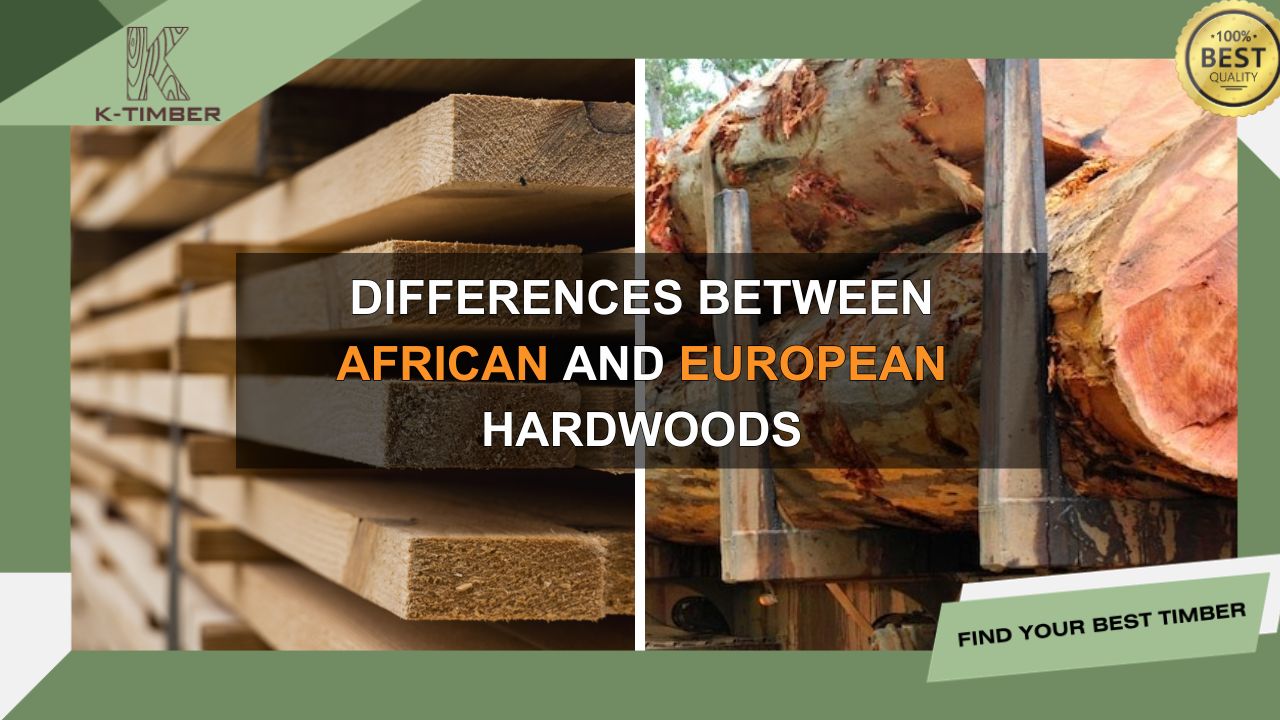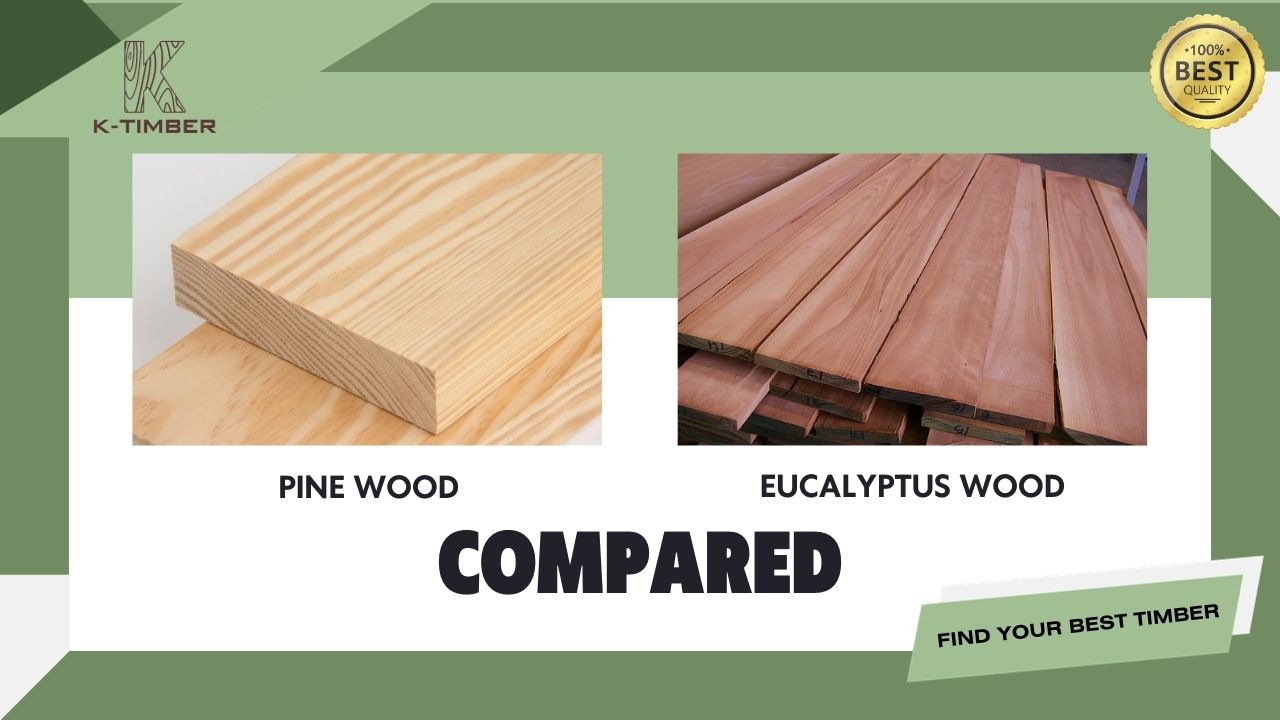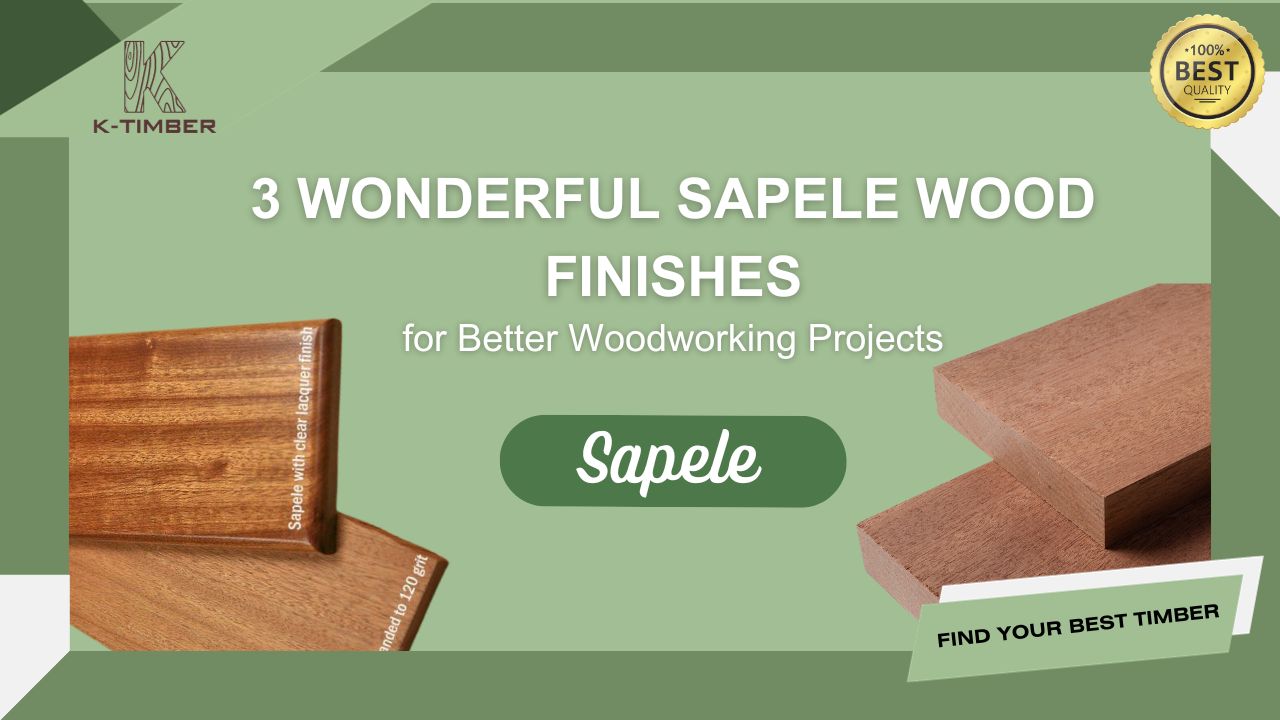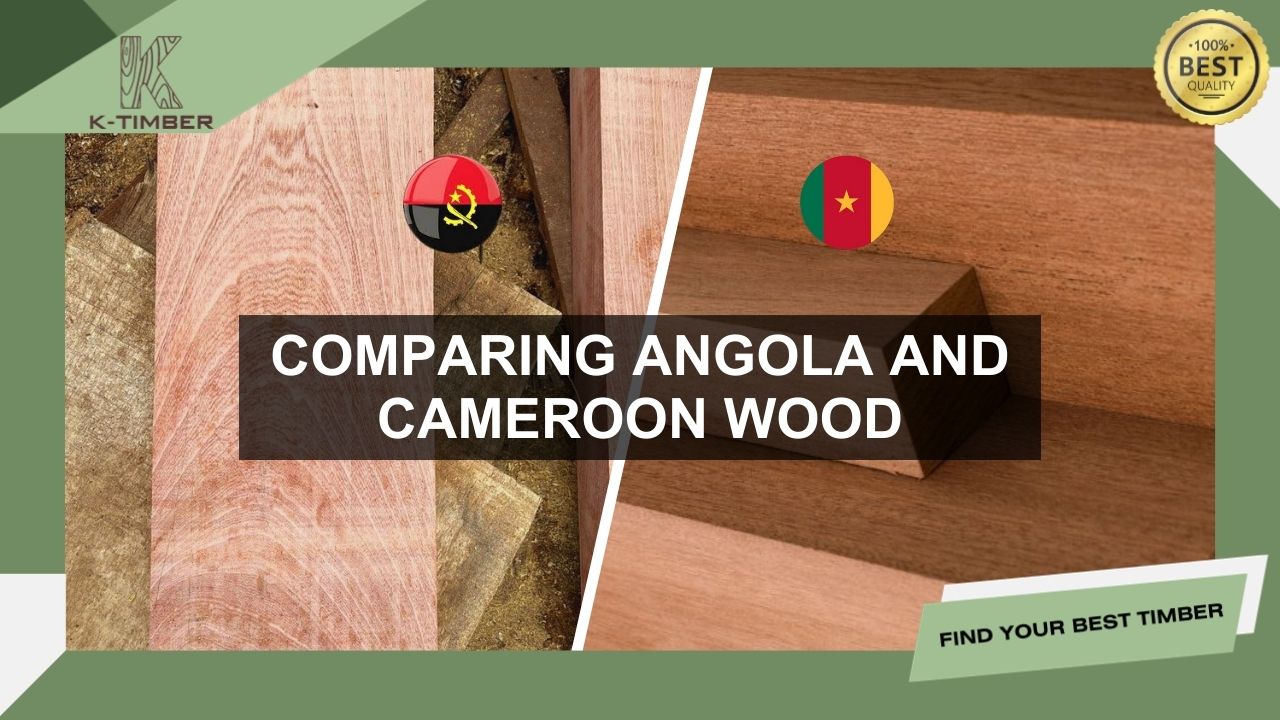In an increasingly competitive global hardwood market, understanding the differences between African and European hardwood is key to helping importers make the right decisions. From properties to applications, this article K-TIMBER will provide an overview and specific comparison between these two types of wood, helping you make the choice that best suits the needs and criteria of your business.

Table of Contents
General introduction about hardwood market
In the wood industry, hardwood plays an irreplaceable role both economically and environmentally. With the global market value reaching $56.37 billion in 2020, the hardwood industry not only demonstrates significant profit potential but also serves as a crucial element in sustainable development and maintenance. Meanwhile, sawn wood production in the EU, led by Germany and Sweden, accounted for approximately 24% and 18% of the EU’s total sawn wood output in 2022, highlighting the robust growth of this industry in Europe. In addition, the hardwood industry in Africa is equally developed with nearly 20 billion USD in market value with three countries: Cameroon, Angola, and Gabon.

Additionally, the wood-based industry in the EU contributed €136 billion to the Gross Value Added (GVA) in 2020, representing 7.2% of the total GVA of the manufacturing industry, with hundreds of thousands of businesses and providing employment for millions. This not only showcases the economic value of hardwood but also emphasizes the importance of protecting and sustainably managing forest resources.
Overview of African hardwoods
African forests, especially the Angola or Cameroon basins, are famous for their biodiversity, possessing the second largest tropical forest in the world and contributing about 10% of the world’s wood species diversity. Angola is the leading exporter, accounting for 20% of Africa’s raw wood exports and supplying 90% of the world’s Sapele and Iroko wood. The region’s timber industry focuses on sustainable forest management, job creation and rural community development, emphasizing the production of high-quality, legal timber in compliance with international regulations

Sapele: Known for its mahogany-like appearance, Sapele is a reddish brown color, often used for floors, furniture, and wall cladding.
African Blackwood: This wood is famous for its high hardness and durability (3660 ibf), often used in making musical instruments and fine arts.
Iroko: Dubbed “African teak”, it does not require regular oil or preservative treatment due to its high durability and resistance to insect attack. Iroko is suitable for exterior projects such as flooring and furniture
Mussivi and Sipo: Hardness is 3,230 lbf, with an average dry weight of 1,035 kg/m³. The wood is quite dark brown with a twisted or fiddleback grain. This is an extremely durable wood that resists decay and weathering
African hardwoods are prized not only for their natural beauty and uniqueness, but also for their durability and ability to withstand a variety of environmental conditions. Most of these woods are highly resistant to termites and rot, making them ideal choices for both interior and exterior projects. In particular, Iroko and Sapele are often chosen for exterior projects because of their good water resistance without needing regular maintenance.
Overview of European hardwood
Europe is not only rich in culture and history but is also famous for its high-quality hardwood industry. In 2022, the EU became a net exporter with log exports exceeding imports from non-EU countries, reaching a difference of 12.5 million m³. EU roundwood production increased by 3.8% in 2021 and stabilized in 2022, reaching an estimated 510 million m³, up 26% compared to the beginning of the millennium. This not only demonstrates the development of the wood industry but also shows that the EU is making a significant contribution to the global hardwood market.

Oak: The hardness of oak depends on the specific type of oak, but some European oaks have a Janka hardness of about 1,290 lbf (pound-force) to 1,360 lbf. This makes oak a good choice for floors, furniture, and projects that require high durability.
Beech: European beech has a Janka hardness of about 1,450 lbf, equivalent to hard maple. This makes beech the ideal choice for the production of furniture, flooring, and other applications that require strength and durability.
Ash: European Ash has a Janka hardness of about 1,320 lbf, showing good bearing capacity and high durability. Ash is often used for flooring and interior construction, and is especially popular in the production of sports equipment such as baseballs due to its good shock resistance.
Comparison of African and European hardwoods
African and European hardwoods, each with unique technical characteristics, color, durability and termite resistance, serve a variety of applications from high-end furniture to construction. build. Below, the comparison table provides a more specific view of the differences between these two wood sources, based on parameters and specifications.
| Criteria | African Hardwood | European Hardwood |
| Technical Properties | Diverse, ranging from soft to very hard | Generally high hardness, especially Oak and Beech |
| Color Range | Wide, from light yellow to deep black | Narrower, often lighter |
| Durability | High for species like Iroko and Sapele | High, especially for Oak and Ash |
| Termite Resistance | Varies, many species have good resistance | Some species like Oak have good resistance |
| Applications | Luxury furniture, decoration, outdoor projects, musical instruments | Furniture, flooring, construction, and industrial applications |
Where should you buy hardwood?
K-TIMBER, a distinguished wood exporting company from Angola, Africa, has made a significant mark in the international wood industry thanks to its vast experience and extensive network across over 30 countries, with a notable influence in Europe. The firm is celebrated for its wide selection of superior woods, including Doussie, Mussivi, Iroko, Sapele, Pachyloba, and Eucalyptus, offering a product quality level of up to 90%. Committed to the highest quality standards, such as the FAS criteria, K-TIMBER’s products are recognized for their strength, excellence, and visual appeal.
With the capacity to supply up to 20,000 m3 of wood per month through its five state-of-the-art sawmills in Angola, K-TIMBER is adept at fulfilling substantial orders while ensuring quality remains paramount. The company’s strong partnership with the Angolan government guarantees a steady flow of top-tier wood and efficient export processes. Furthermore, K-TIMBER is committed to eco-friendly forestry, highlighting its dedication to preserving the environment through sustainable wood harvesting methods.

Contact information:
ADDRESS VIET NAM (K-TIMBER): 169 Nguyen Ngoc Vu street, Cau Giay District, Hanoi.
Phone: (+84) 833333914
Email: [email protected]



![[K-Timber] Blog Post Boder (1)](https://k-timbers.com/wp-content/uploads/2024/06/K-Timber-Blog-Post-Boder-1.jpg)




![[K-Timber] Blog Post Boder](https://k-timbers.com/wp-content/uploads/2024/07/K-Timber-Blog-Post-Boder-2.png)

![[K-Timber] Blog Post](https://k-timbers.com/wp-content/uploads/2024/09/Ban-sao-cua-K-Timber-Blog-Post-Boder.png)